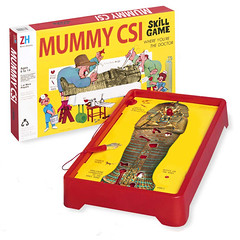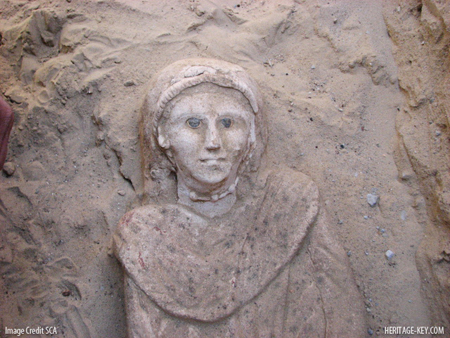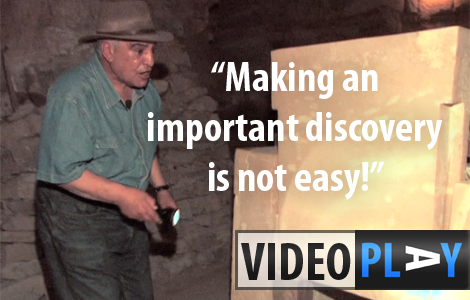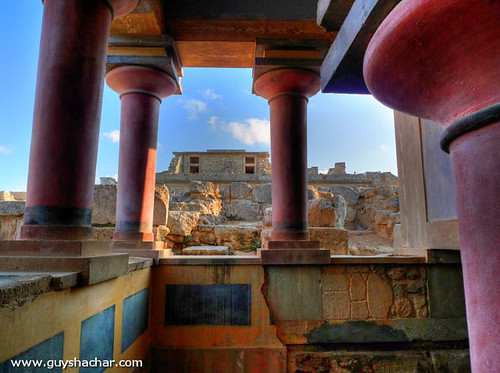I’m pretty sure that this is probably the worst intro written to a blogpost ever, but: ‘W00t!’ Alejandro Amenbar’s big film Agora on the life (and death) of philosopher and mathematician Hypatia of Alexandria will (finally) be released ‘at cinemas nationwide’ (that’s UK) on April 23. I’ve been saying (and typing) for the last nine months that I want to really, really see this English-language movie by Amenbar. Meanwhile, Ive been forced to (not) watch it being released in Spain – where the historical drama earned over $10.3million in four days, becoming 2009’s highest-grossing local film – and the USA…
-
-
News just emerged (to me via Janet E Davis’ tweets) that the Staffordshire County Council applied for a trademark for ‘Staffordshire Hoard’ and ‘The Staffordshire Hoard’ in January 2010. The trademark is still being examined by the UK’s Intellectual Property Office. The 350 + legal counsel application is not just limited to ‘goods’ – meant to protect from ‘counterfeit’ Staffordshire Hoard souvenirs – but lists various uses in the category ‘services’ as well. Will you soon have to knock on the door of the Council and beg for a license or face legal action, if you want teach about Anglo-Saxon…
-
The first ever Ramesside period tomb has been found in Lower Egypt. The 3300-year-old tomb – belonging to Ken-Amun, a government official – has been discovered by an SCAmission at Tell el-Maskhuta. The excavations have also revealed 35 Roman tombs. Click the images for a larger version. In a statement released by the antiquities council, Dr Zahi Hawass reported that the tomb is of very high quality, and beautifully decorated and inscribed with scenes known from the Ramesside Period. It dates to the 19th Dynasty (1315-1201 BC) and is constructed of mud brick and consists of a rectangular room with…
-
Great news for anybody* who missed out on the previous ‘Mummy CSI’ study days with Joyce Filer, as there is another one coming up. A bonus – on top of the normal forensic aspects of ancient Egypt schedule – is an entire day dedicated to the remains of King Tut and the results of the recently published Tutankhamun DNAstudy. The findings from the King Tut study have been widely covered and debated since they were published (some interesting responses on the lineage results on Kate Phizackerley’s and Dylan Bickerstaffe’s blogs, and discussion of Tut’s foot on Em Hotep!) but if…
-
A collection of 14 Graeco-Roman tombs, artefacts and a mummy dating to the third century BC have been discovered in a cemetery in the Ain El-Zawya area of Bawiti, a town in the Bahariya Oasis, Egypt. The find is early evidence of a large Graeco-Roman necropolis at the site. The tombs were found during excavation works ahead of the building of a local youth centre in the area, about 260 miles southwest of Cairo. Dr. Mahmoud Affifi, director of Cairo and Giza antiquities, said that the Supreme Council of Antiquities (SCA) has halted construction and has started legal procedures to…
-
Egypt’s Supreme Council of Antiquities is to expand, with the addition of a new department for archaeological collections. Among its duties will be the registration of privately owned artefacts, as well as supervising the transfers of ownership on these items. The Archaeological Collections Administration is established to facilitate the execution of the newly amended Antiquities Protection Law. The announcement comes only days after Egypt held its first conference on the repatriation of artefacts, showing that Egypt’s focus is not just on retrieving looting antiquities from foreign collections, but mapping and saveguarding those ‘at home’ as well. Farouk Hosni, Egypt’s Minister…
-
Behind each great archaeological discovery there are at least two stories: who found it and how, and to whom it belonged. In case of the buried, or unfinished, step pyramid at Saqqara, both stories are fascinating. But one definitely does not come with a happy ending. Dr. Zahi Hawass tells us about the 1951 discovery of the Buried Pyramid at Saqqara by Egyptian archaeologist Zakari Goneim, and about how professional jealousy and false accusations eventually ended Goneim’s life as well as his career. In the 27th Century BC, Third Dynasty pharaoh Djoser was buried in the famous – and first…
-
I was asked to gather a heap of data for our timeline-testing, and figured King Tut would make the most interesting case. Why?His history is one that contains a combination of ‘estimates’, undecided parentage and debated dates – and causes of death, as a matter of fact – with very few exact facts and dates for the era in which Carter and Carnarvon dug him out. The ‘split’ makes it a good test-case as well. There’s a huge gap between (circa) 1350BCand 1922 during which Pharaoh Tutankhamun was more or less left in peace. Tut’s tomb did not get robbed…
-
5,000 years after they’ve helped construct the gigantic stone circle, aliens return to Stonehenge. Early this morning, the tourists standing in line to access the stones had a strange encounter:a little, green almost-human shaped extraterrestrial skipped the queue – the outrage! – and was the first thread on the almost sacred grass around the monument. When asked what took them so long to return, alien scout Verde Raymaker stated:”Well.. errr.. we kinda lost track of the coordinates. Until they unearthed Bluestonehenge, an amplifier doubled the strenght of the signals emitted by Stonehenge, we did not have a clue we we’ve…
-
One of the pharaohs recorded on the Royal List of Abydos whose tomb is still unaccounted for is the mysterious Userkare. In our Heritage Key video The Hunt for the Lost Pharaoh:Userkare Dr Vasko Dobrev speculates on the possible location for the tomb of Userkare, a 6th Dynasty pharaoh who ruled shortly after Pharaoh Teti was assassinated by a priest. In this video, Dr Dobrev – Egyptologist and Archaeologist – shares that he believes Userkare to be buried at the Southern end of the Saqqara necropolis, where other 6th Dynasty kings can be found as well. The plateau that Dr…








